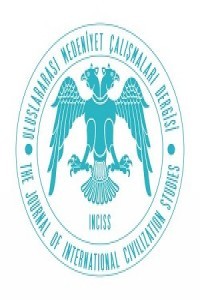MERKEZ BANKASI DÖVİZ REZERVLERİNE YÖNELİK BİR UYGULAMA: KLASİK VE ROBUST REGRESYON YÖNTEMLERİNİN KARŞILAŞTIRILMASI
Zaman serisi verileri uygulamalı araştırmalarda çok sık bir şekilde kullanılmaktadır. Mevsimsel olmayan serilerde regresyon analizi uygularken kullanılan çeşitli klasik ve robust regresyon modelleri mevcuttur. Tüm kullanılan yöntemlerin ortak amacı öngörüde bulunmak ve karşılaştırma yapmaktır. Çalışmada karşılaştırma kriterleri olarak Hata Kareler Ortalaması Mean Squared Error - MSE , Hata Kareleri Ortalamasının Karekökü Root Mean Square Error RMSE , Ortalama Mutlak Yüzde Hata Mean Absolute Percentage Error - MAPE , Ortalama Mutlak Hata Mean Absolute Error - MAE ve Çoklu Açıklayıcılık Katsayısı Multiple Explanatoriness Coefficient- kullanılmıştır. Çalışmanın amacı, mevsimsel olmayan serilerde kullanılan çeşitli regresyon modelleri ve robust regresyon yöntemlerinin etkinliklerini Merkez Bankası Brüt Döviz Rezervlerini temel alarak karşılaştırmaktır
Anahtar Kelimeler:
Regresyon Analizi, Regresyon Modeli, Zaman Serileri, Robust Regresyon, Merkez Bankası Brüt Döviz Rezervleri. Ekonomi
An Applıcatıon For Central Bank Foreıgn Exchange Reserves: Comparısıon Of Classıcal And Robust Regressıon Methods
Time series data are commonly used in applied researches. In non-seasonal series, it can be used for various regression models and these models must be appropriate for trend structure. In addition, robust regression is often used in time series data. The common purpose of these methods make predictions and comparisions. Root Mean Square Error RMSE , Mean Absolute Percentage Error MAPE , Mean Squared Error MSE , Mean Absolute Error MAE and Multiple Explanatoriness Coefficient This study aims to compare the efficiency of various regression models and robust regression methods. These methods are used in regression analysis on the basis of daily Central Bank Gross Foreign Exchange Reserves
Keywords:
Regression Analysis, Regression Model, Time Series, Robust Regression, Central Bank Gross Foreign Exchange Reserves. Economy,
___
- T. Abeysinghe, T. L. Yeok, “Exchange Rate Appreciation and Export Competitiveness: The Case of Singapure,” Applied Economics, Vol.30, Skin 1, 1998, pp: 51-55.
- D. Backus, (1998) “The Japanese Trade Balance : Resent History and Future Perspects,” Japon and the World Economy, Vol.10, pp. 418-431.
- R. Caballero ve A. Krishnamurthy, (1999) “Emerging Market Crises: An Asset Markets Perspective”,NBER Working Papers 6843.
- T.Ö. Durusoy, İ. Tokatlıoğlu, (1997) “Devalüasyon ve J Eğrisi,” Ekonomik Yaklaşım, Y.8, S. 24- 25:65-68.
- H. A. Egeli, (1992) “Türkiye’ de 1980 Sonrası Dönemde İhracatın Gelişimi ve İzlenen Politikaların Etkinlikleri,” D.E.Ü. İ.İ.B.F. Dergisi, Cilt : 7, Sayı:2, pp. 115-121.
- B. Ergül, (2006) Robust Regresyon ve Uygulamaları, Eskişehir Osmangazi Üniversitesi Fen Bilimleri Enstitüsü Yüksek Lisans Tezi, Eskişehir.
- S. Fountas ve D. Bredin, (1998) “Exchange Rate Volatility and Exports: The Case of Ireland,” Applied Economics Letters,, Vol.5, pp. 301-323.
- M. Hasan, Aynul ve Ashfaque Khan, (1994) “Impact of Devaluation on Pakistan’s External Trade: An Econometric Approach,” The Pakistan Development Review, Vol.33, No.4:1205-1217.
- M. K. Hassan, ve R. T. David, (1998) “Exchange Rate Volatility and Aggregate Export Growth in Bangladesh,” Applied Economics, Vol.30, No.2:187-193.
- R. A. Maronna, R. D. Martin, V. J. Yohai, (2006) Robust Statistics Theroy and Methods, John Wiley & Sons, England.
- P. J. Rousseeuw and V. J. Yohai, (1984) Robust Regression by Mean of S Estimators. Robust and Nonlinear Time Series Analysis, 256-274.
- D. Rodrik, (2006) “The Social Cost of Foreign Exchange Reserves”, NBER Working Paper W11952.
- Y. Susanti, H. Pratiwi, S. Sulistijowati, T. Liana, (2014) M Estimation, S Estimation and MM Estiamtion in Robust Regression. International Journal of Pure and Applied Mathematics, Vol 91 No 3 : pp. 349-360.
- A. Zengin, H. Terzi, (1999) “Kur Politikasının Dış Ticaret Dengesini Sağlamadaki Etkinliği,” Ekonomik Yaklaşım, pp.48-65.
- ISSN: 2548-0146
- Başlangıç: 2016
- Yayıncı: Hakan YALAP
Sayıdaki Diğer Makaleler
15 TEMMUZ SONRASI, TÜRK SİYASETİNDE MHP’NİN TUTUMU
BİR MİLLİYETÇİ DEMOKRAT OLARAK ORD. PROF. DR. ALİ FUAT BAŞGİL
Yunus Emre TANSÜ, Neslihan BOLAT BOZASLAN
The Musıcal Instrument “Altaı Zıther” Found In The Cave Of Mongolıan Altaı Mountaın
TEKERLEMELERİN SES EĞİTİMİNDE ARTİKÜLASYONA ETKİSİ
Sevda TOKER, Sema SEVİNÇ, Vahide Bahar ÖNDER YİĞİT
The Sılk Road Culture And Ancıent Turkısh Wall Paınted Tomb
TÜRKLÜK İÇİN YAŞAYIP ÖLEN ADAM DR. RIZA NUR VE TANRIDAĞ DERGİSİ
